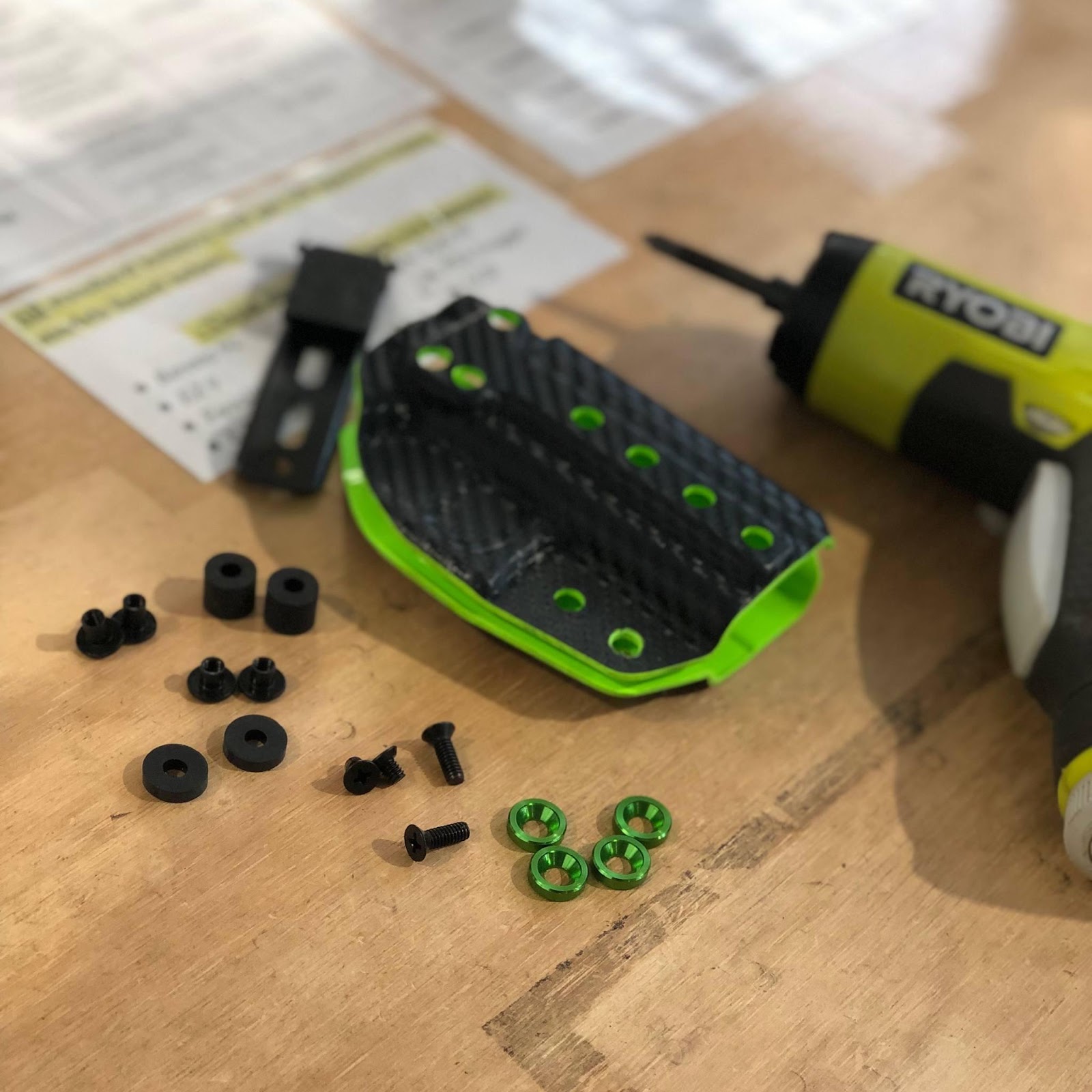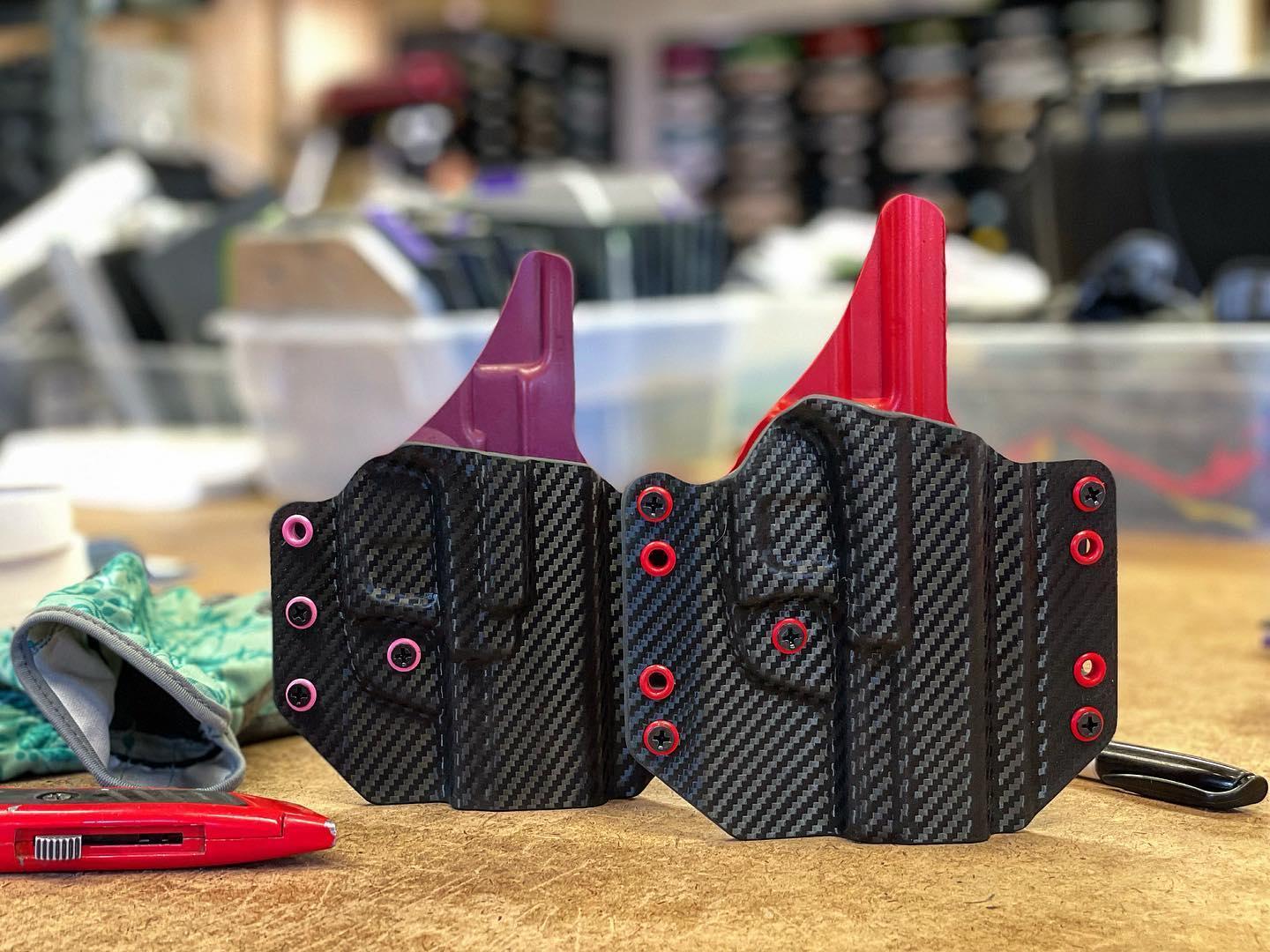Ever wonder how a sheet of plastic becomes the holster keeping your firearm secure? The story of how Kydex® holsters are made is more fascinating than you might think—it's a tale that begins in the cockpits of 1960s aircraft and leads straight to your everyday carry setup.
What started as interior paneling for commercial jets evolved into the gold standard for tactical gear, transforming a simple thermoplastic into the backbone of modern holster manufacturing.
Key Takeaways
-
Kydex® originated in 1965 as aircraft interior material before revolutionizing holster manufacturing in the late 1970s.
-
The thermoforming process transforms flat thermoplastic sheets into precision-molded holsters through heat and pressure.
-
The material's unique properties—durability, moldability, and retention—make it ideal for both custom and mass production.
Today, understanding how Kydex® holsters are made reveals not just a manufacturing process, but a fascinating tale of innovation, adaptation, and precision engineering. At Eclipse Holsters, this innovation continues to evolve, pushing the boundaries of what's possible.
The Birth of a Revolutionary Material
Back in 1965, chemists at Rohm and Haas weren't thinking about gun holsters when they invented Kydex®. They had their sights set on something completely different—creating durable interior panels for commercial aircraft.
The aviation industry needed a material that could handle extreme temperature swings, resist chemicals, and maintain its shape under stress. Traditional materials just weren't cutting it. So they developed this thermoplastic acrylic-polyvinyl chloride composite that could be heated, shaped, and cooled into virtually any form while keeping its strength.
Airlines loved it. The material was lightweight, fire-resistant, and could be molded into complex curves that fit perfectly into aircraft interiors. It didn't crack under pressure, didn't fade from UV exposure, and cleaned up easily—perfect for the demanding world of commercial aviation.
But here's where it gets interesting. This aerospace-grade material had properties that nobody realized would make it absolutely perfect for something entirely different: holding firearms securely.
The same characteristics that made Kydex® ideal for aircraft—its ability to be precisely molded, its incredible durability, and its resistance to environmental factors—would soon make it the go-to choice for holster makers around the world.
How Kydex® Holsters Are Made: The Manufacturing Evolution
The transition from aircraft panels to gun holsters didn't happen overnight. It took a knife maker named Jerry Price to see the potential in the late 1970s.
Price was experimenting with different materials for knife sheaths when he stumbled across Kydex®. He realized that if he could heat this stuff up and press it around a knife, he'd get a perfect-fitting sheath that was tougher than leather and more precise than anything else available.
Word spread fast through the tactical community. Law enforcement officers, who were constantly dealing with holsters that wore out, cracked, or lost their shape, suddenly had access to something that could handle daily abuse and keep performing.
The early process was pretty basic compared to today's standards. Individuals would heat sheets of Kydex® with hair dryers or heat guns, press them around firearms by hand, and trim them with basic tools. It worked, but it wasn't exactly consistent or professional-grade.
That's when small manufacturers started getting serious about the process. They invested in proper heating equipment, built dedicated presses, and developed techniques that could produce the same quality holster every single time.
By the 1980s, what started as a garage hobby had evolved into a legitimate manufacturing process that could meet the demands of law enforcement agencies and military units worldwide.
The Thermoforming Process: Science Meets Craftsmanship
Modern Kydex® holster manufacturing is all about controlling heat, pressure, and timing with scientific precision. The thermoforming process might look simple from the outside, but there's serious engineering happening at every step.
Heat Application: Getting the Temperature Just Right
The process starts with heating flat Kydex® sheets to around 350-400°F. This isn't something you eyeball—the temperature has to be precise. Too cool, and the material won't form properly, leaving you with incomplete molding and poor retention. Too hot, and you risk burning or degrading the material.
Professional holster makers use specialized ovens that distribute heat evenly across the entire sheet. The material becomes pliable and almost rubber-like at the right temperature, ready to take on whatever shape you press it against.
Vacuum and Pressure Forming: Creating the Perfect Fit
Once the Kydex® is heated, the real magic happens. There are three main approaches manufacturers use:
-
Vacuum forming pulls the heated sheet down against a mold using suction. This method is great for simpler shapes and ensures the material conforms tightly to every detail of the firearm or form.
-
Pressure forming uses positive air pressure to push the material against the mold. This technique allows for more complex details and sharper edges, which is why many high-end holster makers prefer it for intricate designs.
-
Clamping technique offers a simpler approach where heated Kydex® is placed between molds and mechanically clamped together. This method provides consistent results and is often used for basic holster designs where extreme detail isn't required.
During this phase, every curve, every detail, every safety feature of the firearm gets perfectly captured in the Kydex®. The material flows around trigger guards, slides, and grips like liquid, then locks into that exact shape as it cools.
Eclipse Holsters' Modern Manufacturing Process
While the basic principles of Kydex® thermoforming remain the same since the 1970s, today's manufacturers have refined the process into a precise science. Eclipse Holsters represents the evolution of this craft, combining traditional techniques with modern technology and customer customization.
The Digital Design Phase
Before any material gets heated, the process starts online. Customers become the designers, choosing custom prints, colors, and configurations through Eclipse's Custom Builder. You can drag your chosen design over a virtual holster and watch it transform in real-time.
This digital-first approach lets you customize everything from belt attachments to magazine pouches, all while seeing exactly how your finished holster will look. It's a far cry from the days when you had to hope your local holster maker understood what you wanted.
From Digital to Physical: The Custom Print Wall
Once your digital selections are locked in, Eclipse's team gets to work at their "custom print wall"—described as the most exciting spot in their shop. While solid colors are available, the specialty prints are the real showstoppers, offering personalization options that early Kydex® pioneers never imagined.
The chosen print is paired with the correct mold from Eclipse's impressive collection of over 100 different firearm molds for both IWB and OWB holsters.
Precision Heating and Forming
Eclipse uses specialized heat presses that bring the Kydex® to exactly 370°F in 90 seconds. The material is placed upside down between protective papers to prevent print bleeding—a technique that ensures your custom design stays crisp and clean.
When the timer dings, the heated Kydex® comes out "really floppy" and is quickly positioned over the gun mold. An air suction press then uses a powerful vacuum to draw the Kydex® tightly around the firearm's shape, precisely capturing every curve and detail.
The beauty of Kydex® is its forgiving nature—if something goes wrong during molding, they can reheat it and try again.
Eclipse's system is incredibly efficient, capable of molding four holsters in just 120 seconds. Each piece gets a four-digit code that communicates with their cutting room, creating a seamless and easily understandable workflow..
CNC Precision Cutting
After the Kydex® cools and hardens, the real precision begins. Three pinpoints get drilled into the material as mounting references for the CNC machine. Cleverly, one of these initial holes becomes a retention screw hole in the final product.
The CNC machine receives the exact cut code for each specific firearm model and cuts all necessary holes for every belt attachment option Eclipse offers. This means your holster is
future-proofed—if you want to switch from a Quick Clip to an UltiClip later, the holes are already there.
Each CNC program runs in 90 seconds or less, performing both a rough cut and a finishing pass for smooth edges.
Final Shaping with Real Firearms
This is where Eclipse's process becomes particularly interesting. They use a heat strip for targeted heating to bend specific parts of the Kydex®, but this time they use the actual firearm as a forming tool.
Using a real gun (safely, with no ammunition on the floor) allows them to create perfect sight channels and accommodate raised sights, suppressor-height sights, and optic-ready setups. They also ensure the magazine release remains accessible when the gun is holstered—a detail that separates professional manufacturing from amateur attempts.
Assembly and Customization
The final assembly brings together all the belt attachment options you selected online. Whether you choose MonoBlock, UltiClip, or Quick Clip systems, each gets installed with precision hardware, including Eclipse's popular washers.
Eclipse's adjustable retention system is a standout feature. Every holster ships "safe"—meaning your gun won't fall out if you turn the holster upside down. But customers can adjust retention to their personal preference, balancing security with draw speed.
Quality Assurance and Rapid Fulfillment
Each holster gets a final inspection, cleaning, and test fitting before shipping. Eclipse backs every product with a lifetime guarantee and offers hassle-free returns with 100% refunds.
But here's what really sets them apart: Eclipse ships everything in three business days or less. Order on Monday, and it's in the mail by Wednesday. With FedEx Express, that means your custom holster is on your doorstep by Friday—even for completely custom designs.
Frequently Asked Questions
How long does it take to make a Kydex® holster?
From raw material to finished product, a quality Kydex® holster takes about 2-3 hours of active work time. This includes heating (15-20 minutes), forming (5-10 minutes), cooling (30-45 minutes), and finishing work (60-90 minutes). However, most manufacturers work in batches, so individual holsters might take several days from start to shipment.
Why is the manufacturing process so precise?
Your safety depends on precision. A holster that's even slightly off in retention could let your firearm fall out—or make it impossible to draw quickly. The trigger guard coverage has to be perfect to prevent accidental discharges. There's no room for "close enough" when lives are on the line.
Can Kydex® holsters be remolded or reshaped?
Yes, but it's not recommended for safety reasons. Kydex® is thermoplastic, so it can be reheated and reformed. However, repeated heating cycles can degrade the material and affect its structural integrity. Professional manufacturers have the equipment and expertise to do this safely, but it's not a DIY project.

